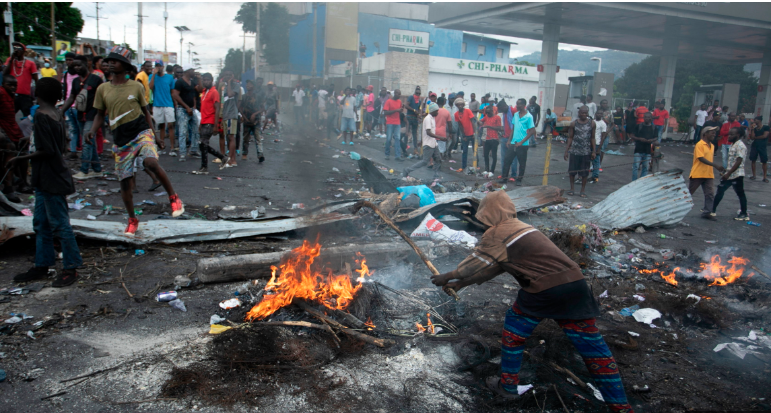The alarming situation in many countries worldwide teeters on the brink of collapse, with Haiti emerging as a prime example of a nation plunged into chaos and instability, surpassing even some African counterparts.
Haiti, nestled in the Western Hemisphere, is descending into lawlessness with a staggering absence of functional state authority. Rampant gang activity plagues urban centers, where daily occurrences of kidnappings and sexual assaults instill fear among residents. Waves of refugees flee the cities, clashes between gangs and law enforcement escalate, and political assassinations, corruption, and crime pervade the nation, transforming it into a veritable war zone. In a recent brazen act, armed gangs stormed a prison in the capital, liberating over 4,000 criminals. Despite the declaration of a state of emergency, the government’s control remains tenuous, overshadowed by the dominance of criminal syndicates. Shockingly, a significant portion of gang members, including their leadership, comprises former law enforcement personnel, emboldened to attack state institutions with impunity, including police precincts, ministries, and even the central bank building.

Haiti’s downfall is emblematic, tracing its roots to a historic uprising against oppression. In 1804, Haiti made history as the first successful slave revolt, leading to its independence, with Jean-Jacques Dessalines at the helm. Born into slavery and freed by a man of mixed race after enduring harsh plantation conditions, Dessalines rose to prominence as a revered figure in Haiti’s fight for freedom. However, the nation’s journey to sovereignty was marred by internal strife, external intervention, and subsequent political turmoil, perpetuating cycles of instability and violence.
Throughout the 20th century, Haiti grappled with political upheaval, punctuated by waves of repression and foreign interventions. The brief period of relative tranquility during the American occupation from 1915 to 1934 saw infrastructural development and economic growth, but subsequent years witnessed a resurgence of instability, marked by military coups and political violence. François Duvalier’s authoritarian rule further plunged Haiti into darkness, characterized by state-sanctioned brutality and suppression of dissent.

Haiti’s entanglement in a vicious cycle of poverty and instability is exacerbated by its tumultuous relationship with France, stemming from a contentious agreement dating back to 1825. The demand for reparations, a debt repaid over a century later, and subsequent political machinations have fueled speculation about foreign interference in Haiti’s affairs, exacerbating its plight.
As Haiti grapples with the scourge of gang violence and political turmoil, its tumultuous history serves as a cautionary tale, underscoring the perils of unchecked corruption and external manipulation in the pursuit of national sovereignty and stability.
